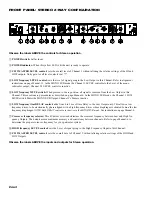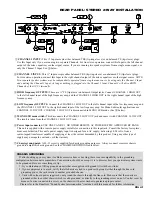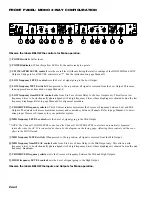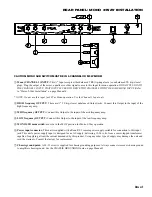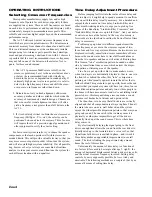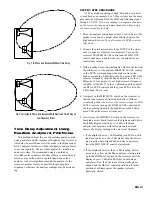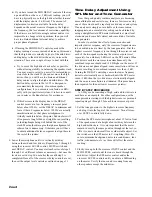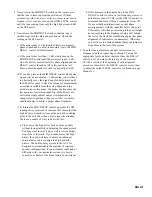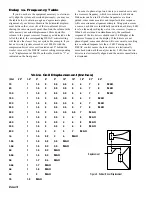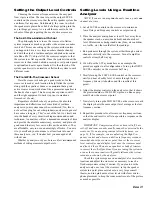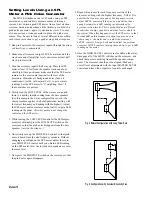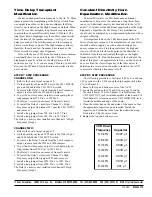
Manual-1
AC 22
ACTIVE CROSSOVER
OPERATORS MANUAL
AC 22 CONNECTION
Balanced/Unbalanced Inputs
The ¼" Input jacks on the AC 22 are TRS (tip-ring-
sleeve). We recommend connecting the AC 22 with a bal-
anced cable from the balanced output of a mixer or equalizer.
If a balanced output is not available, and the cable run is
less than ten feet (three meters), inserting an unbalanced ¼"
TS (tip-sleeve) plug works in most situations.
Unbalanced Outputs
The ¼" Output jacks on the AC 22 are unbalanced TS
(tip-sleeve). We recommend that cables to the amplifiers be
no longer than ten feet (three meters).
See the “Sound System Interconnection” RaneNote
included with this manual for more information on cabling
and grounding requirements.
QUICK START
This is an automatic crossover! By automatic, we mean that the AC 22 is smart enough to know whether you want to
run it as a two channel crossover, or as a single channel unit. It knows by the way the plugs are inserted how your system is
to be configured. However, just because it is automatic, doesn’t mean that it will not automatically confuse you when you
try to connect it in a bench test situation. NOTE: Labels above the controls refer to the unit being operated in the 2-
Way STEREO mode. Labels below the controls refer to the unit being operated in the 3-Way MONO mode.
Plugging a signal into the CHANNEL 1 INPUT and nothing into the CHANNEL 2 INPUT tells the unit that you are
running a single channel system in Mono 3-Way mode, and therefore sets the unit up to be a single channel device. This
can lead one to think that there are some dead channels in the unit when looking for output in places where there shouldn’t
be any.
When operating the AC 22 as a Stereo 2-Way, follow the diagram on page Manual-3, reading the labels above the jacks
and controls. To drive both channels with a mono signal, connect only to the CHANNEL 2 INPUT. This approach is the
same as if you used a wye cable to both Inputs. This is very useful in situations where only one mix exists, but two indepen-
dent channels of crossover are desired, normally used for separate amplification on each side of a stage. This is a good way
to test both channels of the crossover when only one signal source exists.
The AC 22B is available as a fully balanced output version equipped with XLR connectors (for inputs and outputs) instead of
the standard ¼" TRS jacks. If you are running balanced amplifiers from the AC 22 or are running crossover output cable lengths
greater than 10 feet, we highly recommmend you purchase an AC 22B.
Never connect ANYTHING except an RS 1 or other approved Rane AC power supply to the thing that looks like a red
telephone jack. This is an AC supply and requires some special attention if you do not have an operational power supply
EXACTLY like the one that was supplied with your unit. Consult the Rane factory for replacement or substitution.
WEAR PARTS:
This product contains no wear parts.


